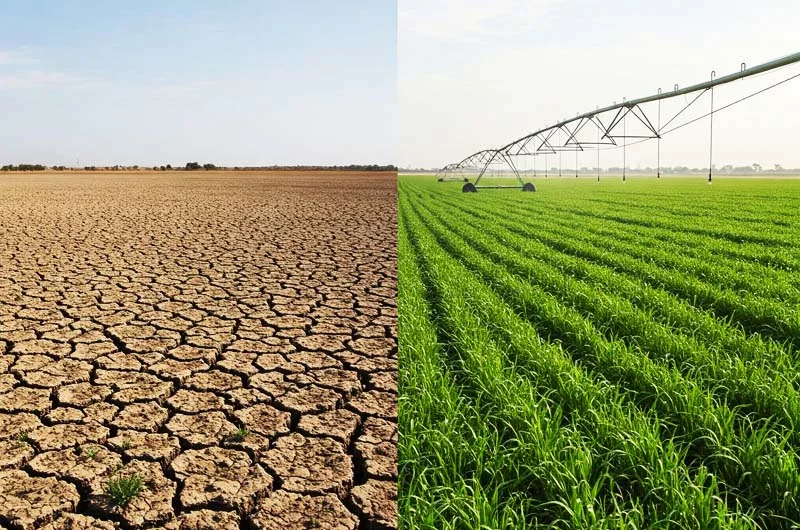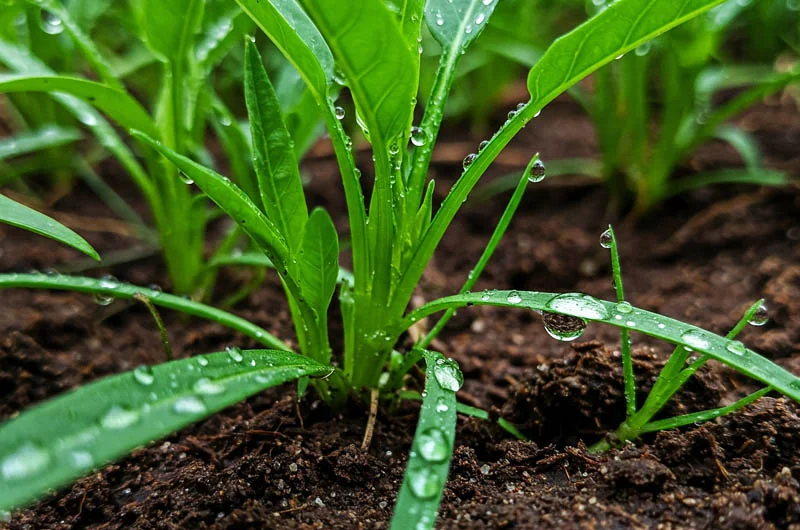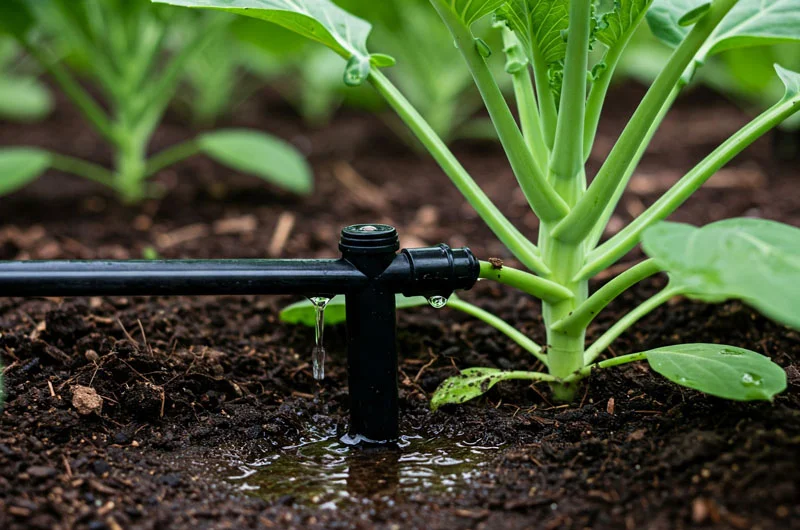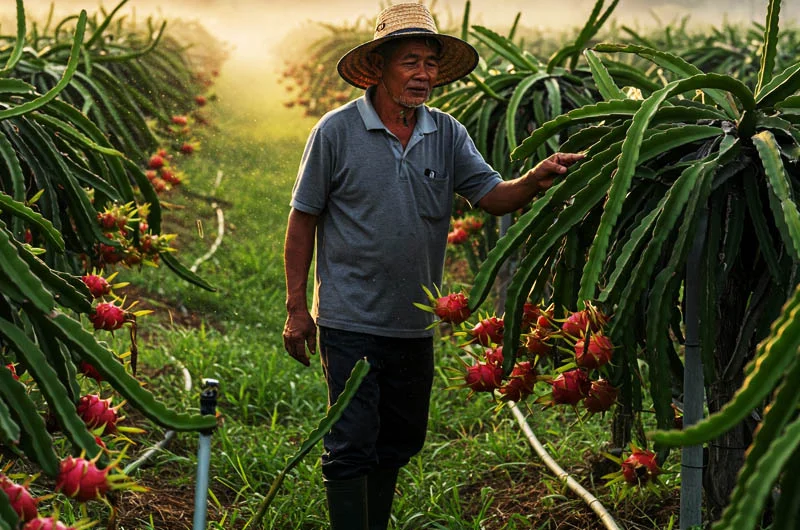Watering Wisdom: A Comprehensive Guide to Irrigation Techniques
Water is the lifeblood of agriculture, and efficient irrigation is crucial for maximizing crop yields, especially in regions facing water scarcity or unpredictable rainfall. Choosing the right irrigation techniques can significantly impact water usage, plant health, and overall farm productivity. This guide will delve into the various irrigation methods available, helping you understand their principles, advantages, and disadvantages.
What are Irrigation Techniques?
At its core, irrigation is the artificial application of water to the soil to assist in the growth of agricultural crops, maintenance of landscapes, and revegetation of disturbed soils in dry areas and during periods of inadequate rainfall. Irrigation techniques refer to the different ways this water is delivered to the plants.

Exploring Different Irrigation Methods:
There’s no one-size-fits-all approach to irrigation. The best method depends on factors like crop type, soil type, topography, water availability, and budget. Let’s explore some of the most common irrigation methods:
1. Surface Irrigation: The Traditional Approach
Surface irrigation involves distributing water over the soil surface by gravity flow. It’s often the most straightforward and cost-effective method initially, but it can also be the least water-efficient. Common types of surface irrigation include:
- Flood Irrigation: Water is released and flows across the entire field. This method is simple but often leads to significant water loss through evaporation and deep percolation. It’s commonly used for crops like rice.
- Furrow Irrigation: Water is channeled down small trenches or “furrows” between rows of crops. This allows for better water control than flooding and is suitable for row crops.
- Border Irrigation: The field is divided into strips or “borders” separated by low ridges. Water is applied to each border and allowed to soak in. This method works well on relatively flat land.

Pros of Surface Irrigation:
- Low initial investment costs.
- Relatively simple to implement and maintain.
- Doesn’t require complex equipment.
Cons of Surface Irrigation:
- Lower water use efficiency compared to other methods.
- Can lead to waterlogging, soil erosion, and nutrient leaching.
- Difficult to apply water uniformly across the field.
2. Localized Irrigation: Precision Watering
Localized irrigation, also known as micro-irrigation, delivers water directly to the root zone of plants through a network of pipes and emitters. This method significantly reduces water waste. Key types include:
- Drip Irrigation: Water is slowly applied in drops or small streams through emitters placed near the plant base. This is one of the most water-efficient methods, minimizing evaporation and runoff. It’s ideal for orchards, vineyards, and high-value crops.

- Micro-sprinkler Irrigation: Small sprinklers or sprayers distribute water over a limited area around each plant. This method is suitable for fruit trees, bushes, and nurseries.

Pros of Localized Irrigation:
- Very high water use efficiency.
- Reduces evaporation and deep percolation.
- Precise water application to the root zone.
- Allows for fertigation (applying fertilizers through the irrigation system).
- Minimizes weed growth.
Cons of Localized Irrigation:
- Higher initial investment costs.
- Requires a more complex system and careful maintenance.
- Emitters can become clogged.
- May not be suitable for all crop types.
3. Sprinkler Irrigation: Artificial Rainfall
Sprinkler irrigation involves spraying water into the air through nozzles, mimicking rainfall. This method is versatile and can be adapted to various terrains and crop types. Common sprinkler systems include:

- Solid Set Sprinkler Systems: Sprinklers are permanently installed throughout the field.
- Portable Sprinkler Systems: Sprinklers and pipes can be moved as needed.
- Center Pivot Irrigation: A long sprinkler pipe rotates around a central pivot point, irrigating a circular area. This is commonly used for large fields.
- Linear Move Irrigation: Similar to center pivot, but the sprinkler pipe moves in a straight line across the field.
Pros of Sprinkler Irrigation:
- Adaptable to different terrains and soil types.
- Provides good water distribution uniformity.
- Can be used for cooling crops and frost protection.
- Allows for fertigation.
Cons of Sprinkler Irrigation:
- Lower water use efficiency than localized irrigation due to evaporation.
- Higher energy costs for pumping water.
- Can be affected by wind.
- Leaf wetness can increase the risk of certain plant diseases.
4. Subsurface Irrigation: Watering from Below
Subsurface irrigation delivers water directly to the root zone from below the soil surface. This can be achieved through buried perforated pipes or other porous materials.
Pros of Subsurface Irrigation:
- Very high water use efficiency.
- Minimizes evaporation and surface runoff.
- Reduces weed growth and soil compaction.
- No obstruction to field operations.
Cons of Subsurface Irrigation:
- High initial investment costs.
- Difficult to install and maintain.
- Potential for clogging by roots or mineral deposits.
Choosing the Right Irrigation Technique:
Selecting the most appropriate irrigation technique for your specific needs involves considering several crucial factors:
- Crop Type: Different crops have varying water requirements and root depths.
- Soil Type: Soil texture and infiltration rates influence how water moves and is retained.
- Water Availability and Quality: The quantity and quality of your water source will impact your choices.
- Topography: The slope and layout of your land can favor certain methods.
- Climate: Rainfall patterns, temperature, and wind conditions play a significant role.
- Budget: Initial investment, operational, and maintenance costs vary significantly between techniques.
- Labor Availability: Some methods require more manual labor than others.
Modern Trends in Irrigation Technology:
The field of irrigation is constantly evolving with advancements in technology. Smart irrigation systems utilize sensors, weather data, and automation to optimize water application based on real-time conditions and plant needs. This leads to even greater water efficiency and reduced waste.
Choosing the right irrigation techniques is a critical decision for sustainable agriculture and efficient resource management. By understanding the different irrigation methods available and carefully considering your specific circumstances, you can significantly improve your water use efficiency, enhance crop yields, and contribute to a more sustainable future. Explore further resources and consult with agricultural experts to determine the best watering wisdom for your land.

